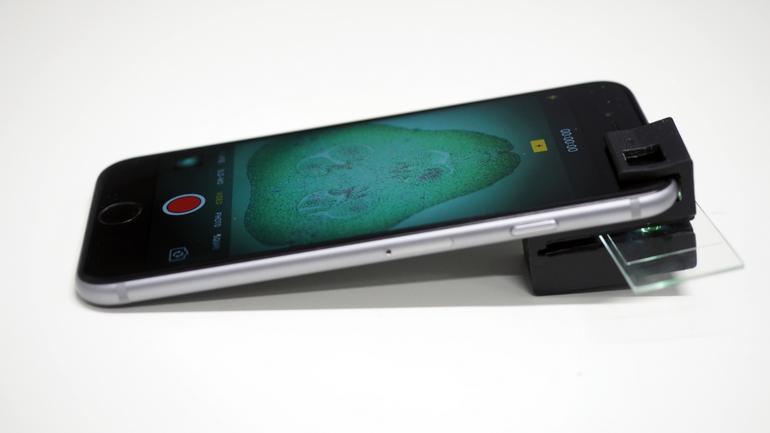magnification
Latest

3D-printed smartphone microscope is good enough for scientists
Your smartphone could soon be a fully functional microscope capable of examining samples as small as 1/200th of a millimeter. Australian researchers have developed a clip-on device that requires no external light or power sources to produce a clear picture of microscopic organisms and cells from animals, plants and blood -- and it can be made by anyone with a 3D printer, as the team is sharing the 3D printing files publicly.

Under the microscope: a closer look at the new iPad
Sure, you can take us on our word that the new iPad really is that much sharper than its predecessor -- or, you can opt for a more scientific approach, and peek at that Retina display under a microscope. Our own Richard Lai slid his 64GB WiFi iPad under a USB scope, going far beyond the naked eye for a close-up look at those gorgeous high-density subpixels. As you can imagine, it's impossible to distinguish one dot from the next when you're looking at a cool three million pixels packed tightly within a 9.7-inch slab, but that view clears up quite nicely under a 230x microscope. What you'll see is that those tiny red, green and blue dots are now significantly smaller, when compared to the iPad 2. That means text that's easily legible without a pinch, smooth icons and far sharper pictures. There's a dramatic improvement for sure, but is that new display alone enough to justify the upgrade for you? A quick click through the gallery below should help clear things up.Richard Lai contributed to this report.

University of Twente's new lens reveals the sub-100nm level with visible light
Small is beautiful, but only when you can see it. Specifically, we're talking about nanostructures -- including cellular organelles and nanoelectronic circuits -- around the order of 100nm. The problem is with a microscope, visible light only takes us down to a resolution of 200nm at best, and it's not always ideal to use conventional methods to boost the resolution -- you'd either have to dope the subject with fluorescent dye or use highly delicate equipment. Thankfully, the University of Twente has come up with a new type of lens that would solve this problem: in a nutshell, a nanoparticle is placed on one side of the gallium phosphide lens, while the other side -- disorderedly etched with acid -- takes in a precisely modulated laser beam and scatters it into a focal point of your choice. Sure, this sounds bizarre and ironic, but apparently the modulation is controlled in such a way that the scattered beam focuses much tighter than an ordinary beam would using an ordinary lens. Have a look at the comparison shots of some gold nanoparticles after the break -- that's some sweet 97nm resolution right there for ya.

iPhone camera mod for magnification: because you can
We've thought before how nice it might be to have some powers of magnification on the iPhone's cam... but are we going to go out and mod our unit? Probably not, but that doesn't mean we can't admire someone else's work. Taking various lenses and attaching them to the lid of a jar, the modder quite carefully built a contraption that looks a little "hobo Steampunk" to us, but we're still fairly impressed with this little gadget. Hit the read link for full, detailed instructions and more photos if you'd like to make one of your own.


